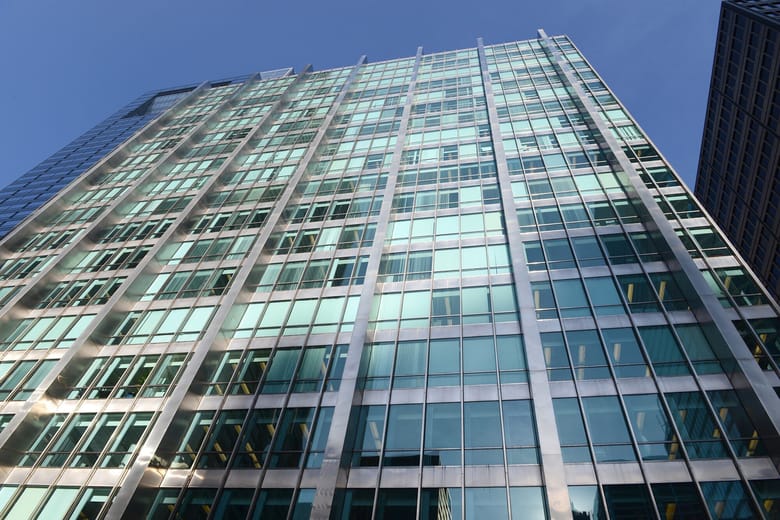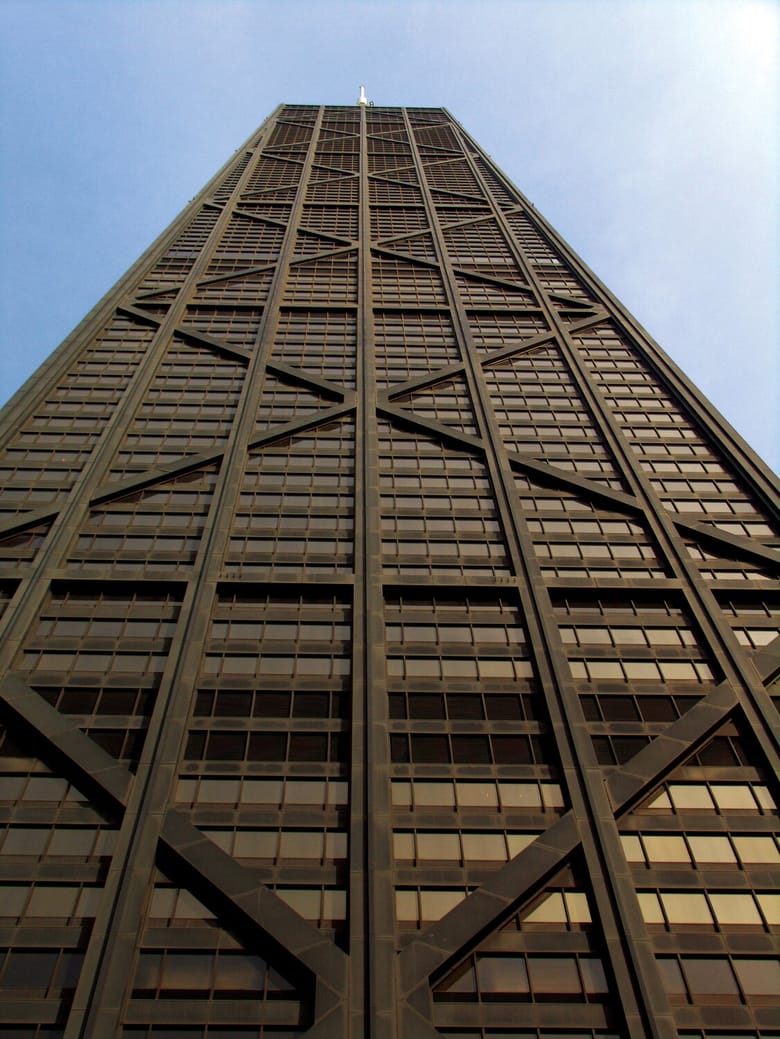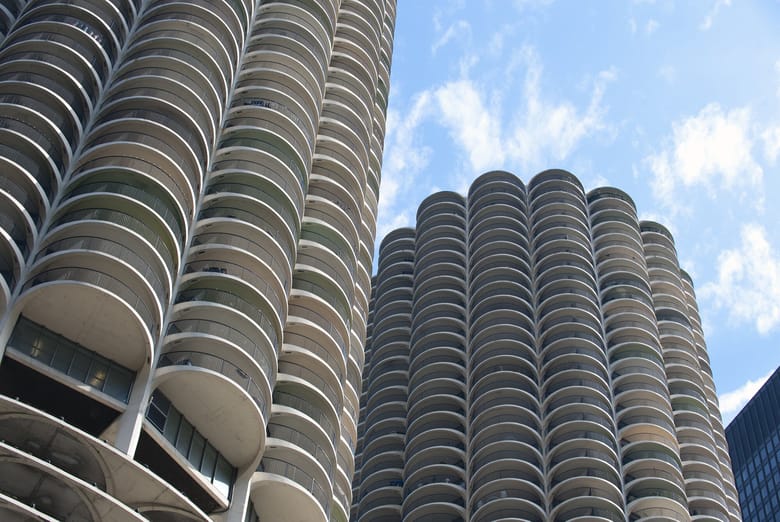Mid-Century Modernism
Inland Steel Building
John Hancock Center
Marina City
By the middle of the 20th century, architects trained in the tenets of Modernism began to experiment with new materials and forms. Their buildings featured technical precision, an expressed structure and a lack of ornamentation. But rather than just the “skin and bones” architecture advocated by Ludwig Mies van der Rohe, Mid-Century Modern buildings often used sculptural curved forms and fewer 90 degree angles than the International Style buildings that predated them.
Architects experimented with poured concrete, rather than just steel and glass, and used various prefabricated methods of construction. Bertrand Goldberg’s Marina City is one such example.
Characteristics include:
- Organic forms inspired by nature
- Clean lines
- No applied ornamentation
- Innovative uses of glass
- A mixture of various materials

























